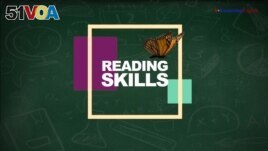08 August 2023
Phonics is where written language meets spoken language.
Phonics teaches students the relationship between the letters of written language and the sounds of spoken language. The goal of phonics is to help students learn how to use the alphabet to read and write words. It also helps them understand writing.

Early Literacy: Letter-sound Connection (Phonics)
Teaching tips for phonics
Effective phonics instruction should:
- include letter shapes and names
- work with each separate sound in a word
- include all major letter-sound relationships
Teach phonics in a clear and direct way with a plan.
When you teach letter-sound relationships tell your students the goal of the lesson. Explain the learning strategies you plan to use. After you teach something such as words or spelling patterns, plan to use them often with your students. Use them in sentences, songs, or poems. Play games with them. Read texts and stories using words or letters. Practice writing them.
Teach the ABCs.
Singing the ABC Song is a great place to start. As you say each letter, point to it. This will help teach the connection between letters and sounds. Have them write letters early and often.
However, do not teach the alphabet in order from A to Z.
It is fine to say or sing the full alphabet in order. However, when you begin teaching individual letters, experts advise against teaching them in order. Teachers often start with this group of letters — s, a, t, i, p, n. They make more three-letter words than any other six letters. Have them write letters early and often.
Teach commonly confused letters or sounds separately.
Some English language learners confuse some letters. If that is the case with your students, teach them separately. Let the students master one letter sound before moving to a similar one. Some commonly confused letters are:
- b, d, p
- e, i
- m, n
- t, d
If a sound is written more than one way, teach the different spellings one at a time. For example, the long /a/ sound can be spelled several different ways. Try teaching its forms in order:
- First, -ai as in "train;"
- Next, -a_e as in "gate;"
- Then, -ay as in "day;"
- Finally, use them together in a game or activity.
Teach short vowel sounds first. Words with short vowel sounds are usually easier to say and spell. At this stage, teach single-beat (syllable) words with short vowel sounds, like "sat" and "pat." However, short vowel sounds can be confusing. So, teach them separately.
Teach easy and common consonant letter sounds first.
Some consonants are easier than others. Usually, consonants that you can stretch out are easier to say – letters like m, s, and f.
With some consonant combinations you can hear each letter, such as fl, sp, tr, and st. (These are called blends. In the video for this article, you can hear them all.) Teach these with short vowel sounds, for example "flap," "spin," "trim," "step."
With some consonant combinations, the consonants become one sound, such as the /sh/ in "sheep." (These are called digraphs.) Teach common consonant combinations like ch, sh, and th. But keep in mind, some students may have a hard time with these.
For all of these suggestions, teachers must decide which sounds are easiest for their students.
Learning strategies for teaching phonics
Learning Strategy: Use all the senses.
Let the students see your face and mouth make the sounds. Use a mirror so the students can see their own mouths make sounds.
Have students touch their throats and say letter sounds. Some letters move the throat. Some letters do not move the throat.
Put a tissue in front of your face and show how some sounds make the tissue move while others do not.
Have students draw letters with their fingers while saying them. Students can draw letters in materials like sand or paint.
Students can also build letters with their bodies. Put students in groups. Give them a letter or they can pick a letter. Then they make the letter with their bodies.
Learning Strategy: Alphabet Matching
Young learners are just beginning to understand that there are relationships between written letters and spoken sounds. They are also learning that these relationships follow rules. They are learning the alphabetic principle.
Teachers can help students develop this understanding with fun activities that play with alphabet letters and sounds — for example, games that match lowercase and uppercase letters.
Assessment for phonics
Ask students questions about lesson material. Some assessments will be spoken, and some will be written.
Sample questions:
- What sound do the letters "s" and "h" make when you put them together?
- How do you spell the /sh/ sound?
- How can I turn the word "bit" into "bite?"
Ask students to pick out the following in a text:
- uppercase and lowercase letters
- consonant sounds and letters
- long vowel sounds and letters
- short vowel sounds and letters
Read short vowel sounds in consonant-vowel-consonant words:
mat, cat, bag, bat
Read consonant combinations with short vowels:
flag, trim, brag
Read long vowel spellings:
- long /a/ sound spelled ai, ay, a_e
- long /e/ sound spelled ee
Read words with many syllables:
- treehouse
- rainbow
- bookbag
- syllable
Use these tips, strategies, and assessment methods that best serve you and your learners. Change them to fit your students and teaching situation.
I'm Anna Matteo. And I'm Caty Weaver.
Anna Matteo wrote this article for VOA Learning English. It is part of a larger collection of Early Literacy Materials.
___
Words in This Story
syllable –n. a natural division of a word based on sound; a sound unit that makes up a word
blend –n. A blend is two consonants together that each make a sound. In the word "stop" the /s/ and the /t/ each make a sound.
digraph –n. A digraph has two letters but only one sound. In the word "shop" the /sh/ makes only one sound.
alphabetic principle –n the idea that there are systematic and predictable relationships between letters and the sounds they represent












